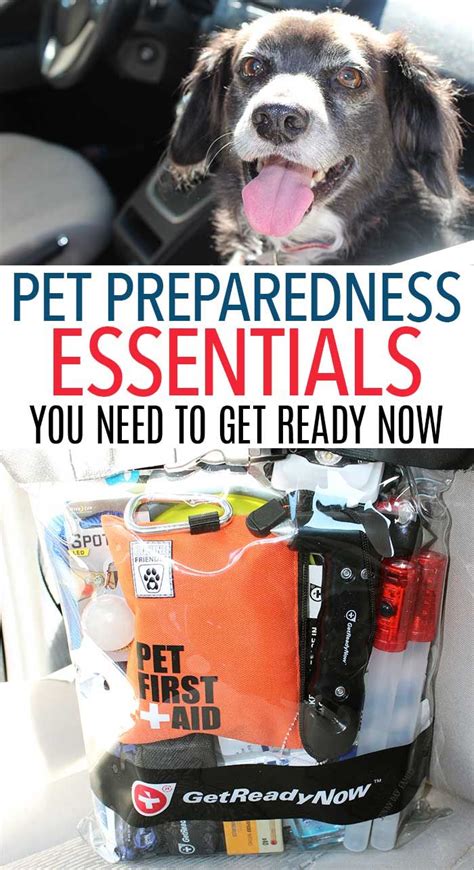Introduction
In the face of unforeseen emergencies and crises, it is imperative to prioritize the well-being of our beloved pets. Sadly, only 60% of U.S. households have a pet evacuation plan in place, according to the American Red Cross. This alarming statistic highlights the urgent need for proactive planning to ensure the safety of our furry companions.

Part 1: Assembling an Emergency Kit
Materials:
- Identification: Collar with ID tags, microchip, and recent photo
- Food and Water: Non-perishable food (3-day supply), collapsible bowls, and bottled water
- Medications: Essential medications, medical records, and a first-aid kit
- Comfort Items: Blanket, toys, and a favorite treat to provide familiarity
- Portable Shelter: Crate or carrier with ample ventilation
Tips:
- Rotate Food Regularly: Replace old food with fresh before its expiration date.
- Use Waterproof Containers: Keep medications and first-aid supplies in sealed plastic bags.
- Label Everything: Label all items clearly with your pet’s name and important information.
Part 2: Establishing a Crisis Communication Plan
Contacts:
- Emergency Contact: Choose a trusted person outside the immediate area.
- Veterinarians: Establish contact with two veterinarians in different locations.
- Animal Welfare Organizations: Identify local animal shelters, humane societies, and rescue organizations.
Communication Methods:
- Designated Meeting Place: Establish a pre-designated meeting place in case of evacuation.
- Social Media: Use social media platforms to share updates and connect with others.
- Emergency Cards: Carry laminated emergency cards with contact information.
Tips:
- Keep Contact Information Updated: Regularly check that all contact information is accurate.
- Use Technology to Your Advantage: Consider pet tracking devices or apps for real-time updates.
- Involve Family and Friends: Share your crisis communication plan with family and friends.
Part 3: Preparing for Different Types of Emergencies
Natural Disasters:
- Hurricanes: Secure loose objects, create an evacuation route, and monitor weather forecasts.
- Earthquakes: Prepare an earthquake go-bag with food, water, and medical supplies.
- Floods: Move pets to higher ground and keep them away from floodwaters.
Man-Made Disasters:
- Fires: Keep a fire extinguisher on hand and evacuate immediately if smoke or flames are detected.
- Chemical Spills: Close windows and doors, and seek immediate medical attention for pets exposed to chemicals.
Medical Emergencies:
- Heatstroke: Recognize symptoms such as excessive panting, drooling, and confusion.
- Poisoning: Identify common household plants and foods that are toxic to pets.
- Injuries: Apply bandages and seek professional veterinary care promptly.
Tips:
- Research Local Resources: Stay informed about potential hazards and evacuation routes in your area.
- Train Pets for Emergencies: Desensitize pets to loud noises and practice evacuating from different exits.
- Consider Pet Insurance: Explore pet insurance options to cover unexpected veterinary expenses.
Common Mistakes to Avoid
- Assuming Pets Will Be Avoided: Emergencies can happen quickly, and pets may not have time to evacuate on their own.
- Leaving Pets Home Alone: Pets left unattended during an emergency are at risk of injury, dehydration, or emotional distress.
- Not Having a designated Meeting Place: Without a predetermined meeting place, it can be difficult to reconnect with lost pets.
- Unprepared Emergency Kit: Ensure that the emergency kit is complete and easily accessible.
- Lack of Communication: Establish a crisis communication plan to stay informed and connected with others.
Why Pet Emergency and Crisis Planning Matters
- Protects the lives of our beloved companions
- Reduces stress and anxiety for pets and their owners
- Facilitates efficient evacuation and recovery efforts
- Minimizes the risk of health issues or injuries
- Ensures peace of mind during unpredictable events
Case Detail Comparison
Example 1:
A family had a comprehensive pet emergency plan in place. When a hurricane struck, they were able to evacuate safely with their pets, thanks to an accessible emergency kit and a designated meeting place.
Example 2:
A pet owner left their dog unattended during a house fire. Tragically, the dog perished in the flames.
Conclusion
Pet emergency and crisis planning is a crucial aspect of responsible pet ownership. By following these comprehensive tips, you can ensure the well-being of your furry friends in the face of unforeseen events. Remember, every second counts during an emergency, so take proactive steps today to safeguard the lives of your beloved pets.





















